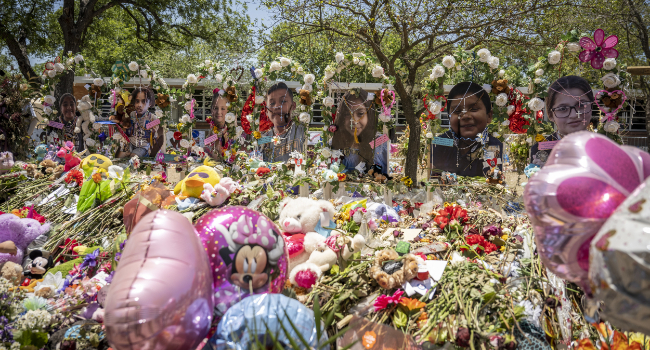
Justice Department Releases Report on Critical Incident Review of Response to Uvalde Elementary Shooting
The Justice Department announced today the release of a report on its critical incident review of the law enforcement response to the tragic school shooting at Robb Elementary School. Attorney General Merrick B. Garland announced the review shortly after the tragedy on May 24, 2022, in which 19 children and two teachers died at Robb Elementary School in Uvalde, Texas. The report provides a thorough description of the critical incident review that has taken place over the past 20 months.
The report is intended to provide the most comprehensive assessment available of the law enforcement response to the horrific incident on May 24, 2022, as well as the emergency medical response, communications, and trauma services in the wake of the tragedy. It begins with a minute-by-minute timeline reconstructing key events before, during, and immediately following the shooting. The report addresses many previously unanswered questions, builds on the existing knowledge base for responding to incidents of mass violence, and identifies generally accepted practices for effective law enforcement responses. In doing so, this report endeavors to honor the victims and survivors of this tragedy, as well as offer recommendations to improve future responses in other communities.
“The victims and survivors of the mass shooting at Robb Elementary School deserved better,” said Attorney General Garland. “The law enforcement response at Robb Elementary on May 24th, 2022 — and the response by officials in the hours and days after — was a failure. As a consequence of failed leadership, training, and policies, 33 students and three of their teachers — many of whom had been shot — were trapped in a room with an active shooter for over an hour as law enforcement officials remained outside. We hope to honor the victims and survivors by working together to try to prevent anything like this from happening again, here or anywhere.”
“Uvalde is a community that is healing, and getting clear on the facts is part of healing,” said Associate Attorney General Vanita Gupta. “As I made clear last April when I came to Uvalde to meet with families and reiterated to them last night, we promised that our report would honor the victims and survivors; provide a detailed, independent, and authoritative accounting of the events; and would not only look backward but would also identify lessons learned and recommendations for other communities to prevent something like this from happening again.”
“The observations and recommendations in this report are based on national standards, generally accepted standards and practices, current research, and the expectations of communities,” said Director Hugh T. Clements, Jr. of the Office of Community Oriented Policing Services (COPS Office). “Reports like this are critical to law enforcement and, by extension, to the community. As agencies constantly strive to do better and be more fully prepared, detailed observations and recommendations like those within this report are invaluable to agencies planning for the future.”
The report examines the multiple failures in the response to the tragedy, including the breakdowns in leadership, decision-making, tactics, policy, and training that contributed to those failures. It describes the responding officers’ most significant failure as not treating the incident throughout as an active shooter situation and using the available and sufficient resources and equipment to push forward immediately and continuously to eliminate the threat. Although several of the first officers on the scene initially acted consistent with generally accepted practices to try to engage the subject, once they retreated after being met with gunfire, the law enforcement responders began treating the incident as a barricaded subject scenario rather than as an active shooter situation. In all, there was a 77-minute gap between when officers first arrived on the scene and when they finally confronted and killed the subject.
The report also examines the communications challenges during and after the shooting, including the inaccurate narrative that was initially delivered. It also documents the trauma and support services that were provided, as well as those that were not provided, to victims, survivors, family members, and responders.
The critical incident review was led by the COPS Office, with the support of leading subject matter experts with a wide variety of relevant experience. The team established the following areas of focus: (1) incident timeline reconstruction; (2) tactics and equipment; (3) leadership, incident command, and coordination; (4) post-incident response and investigation; (5) public communications during and following the crisis; (6) trauma and support services; (7) school safety and security; and (8) pre-incident planning and preparation.
The team collected and reviewed more than 14,000 pieces of data and documentation, including policies, training logs, body camera and CCTV video footage, audio recordings, photographs, personnel records, manuals and standard operating procedures, interview transcripts, investigative files and data, and other documents. The team also spent 54 days onsite in Uvalde and conducted over 260 interviews of individuals who either played a role or had important information related to areas of the review. Those interviews included personnel from the law enforcement agencies involved in the response to the mass shooting; other first responders and medical personnel; victims’ family members; victim services providers; communications professionals and public information officers; school personnel; elected and appointed government officials; survivors and other witnesses; and hospital staff.
The report, in both English and Spanish, as well as profiles of the victims and additional resources, is available on the COPS Office website at cops.usdoj.gov/uvalde.